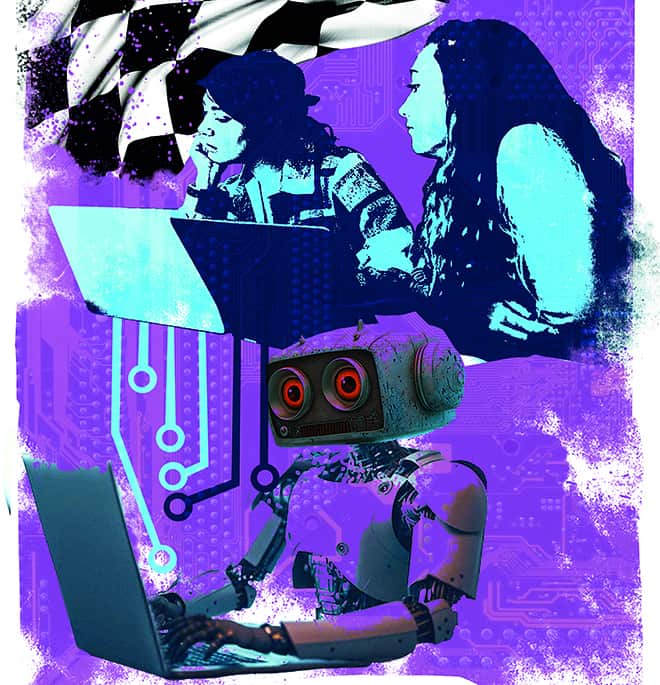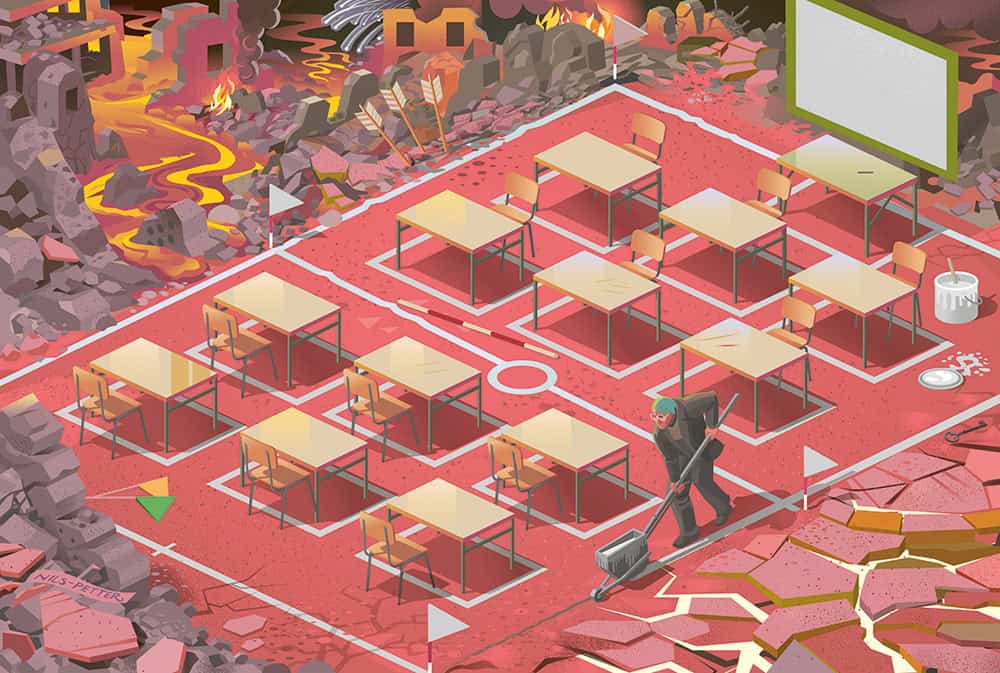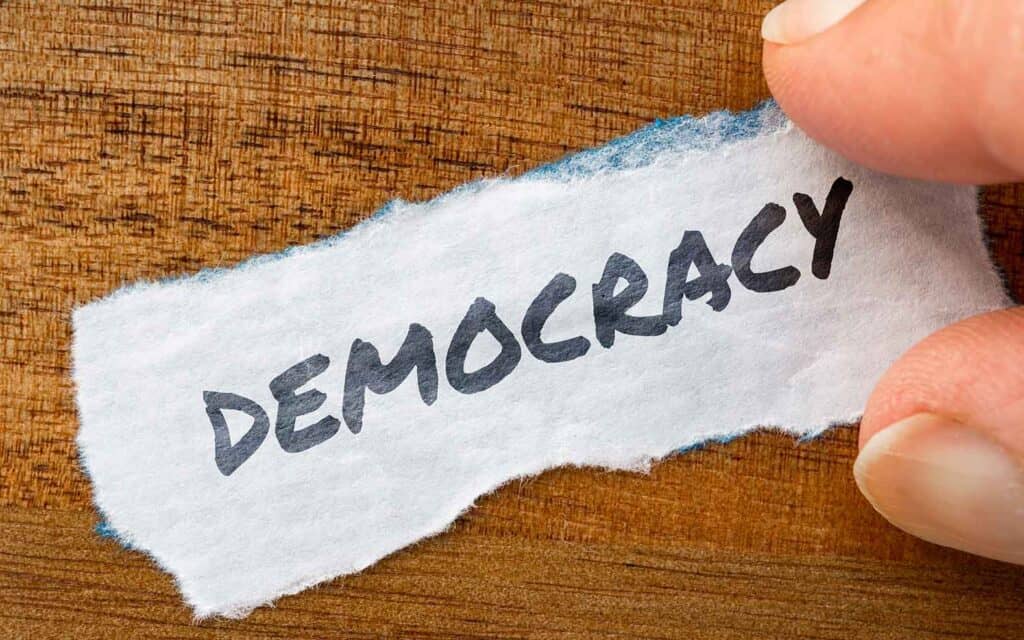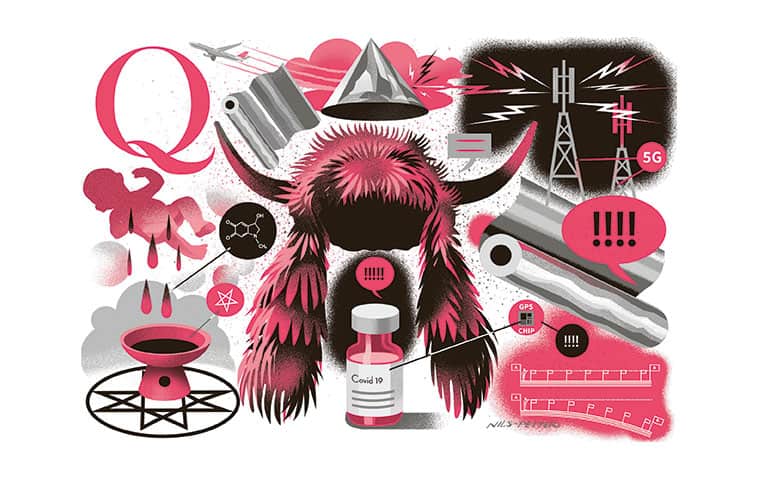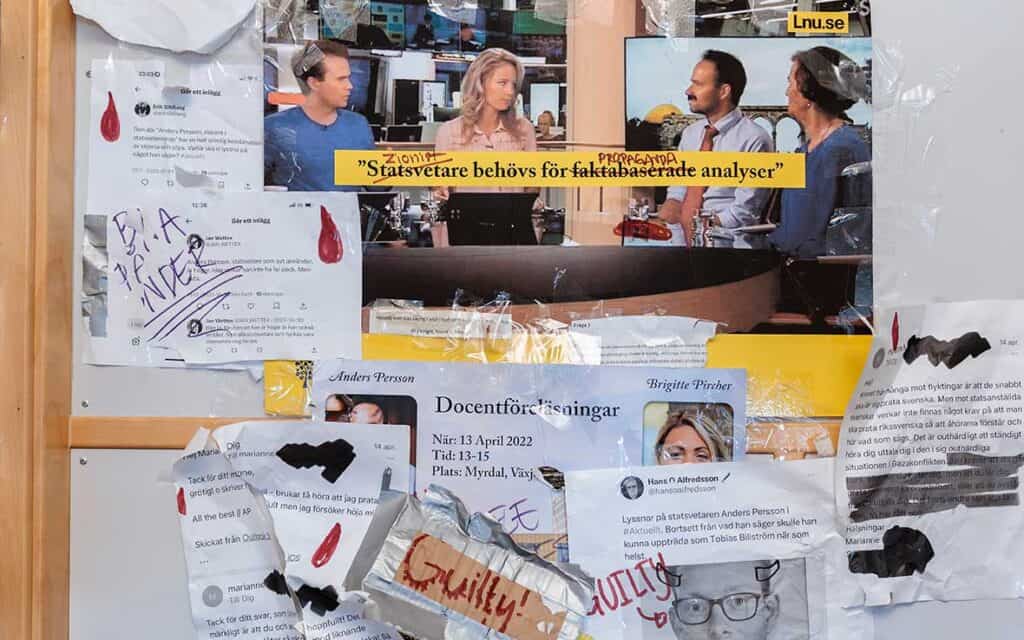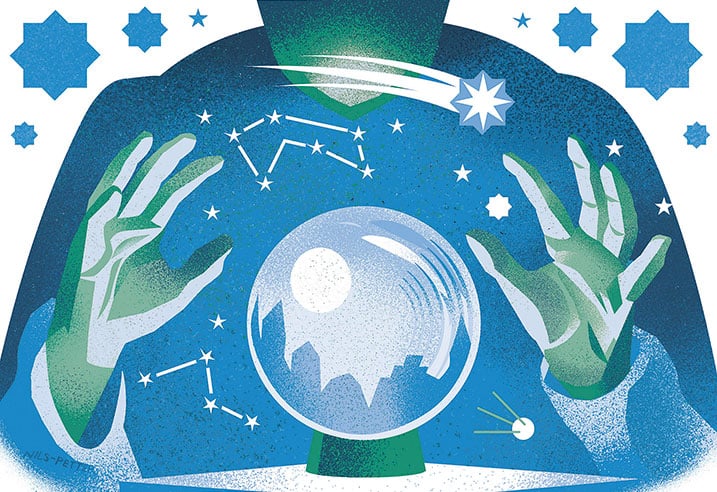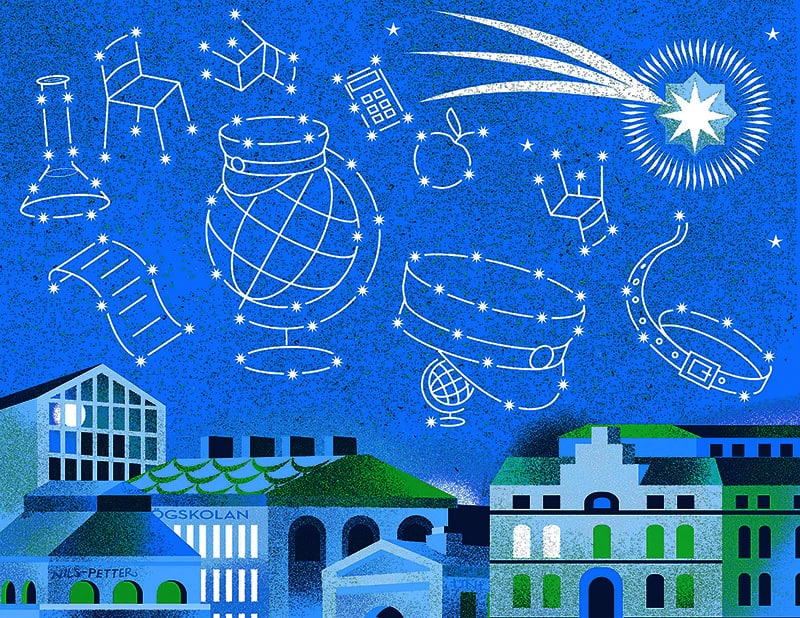A computer went through about eight million web pages, looking for how people express themselves. Based solely on a couple of provided lines, it then wrote the script for the play Nattygsbordet, (The Bedside Table), which was staged at the Gothenburg Theatre a few years ago.
When it comes to academic texts, students can use various websites, sometimes for free and sometimes for a fee roughly equivalent to the monthly cost of a streaming service, to fill in a title for their work. After entering a few keywords or questions, a downloadable text is just a minute or two away.
When the theatre company Revet resumed its Nattygsbordet tour last autumn, the actors explained to Swedish Television that it was difficult at first to put their finger on what the play was really about. It is a little like that with AI-authored texts at university level as well, says Marcus Persson, docent of sociology at Linköping University.
The actual writing takes place in almost no time, but some processing of the text is often required before the student can submit it, he says.
Surprised by what is available
Marcus Persson drew attention to the phenomenon of students using AI writers in a column in Universitetsläraren at the end of 2022. When he tested different AI writers, he was surprised.
“If I had received my own AI-generated text in my hand for assessment, I would probably have reacted to its lack of structure, despite good use of references. At the same time, you get some unstructured texts from students. And I sometimes also get comments myself from colleagues that my writing is a bit unstructured.”

So far, Persson feels that the AI writers are somewhat better at English than at Swedish, which is probably a very temporary issue. “I may well have received AI-written texts, and I may well have also let such texts slip through.”
Explosive development
Since Nattygsbordet was performed for the first time in 2020, and after Marcus Persson’s column was published in Universitetsläraren, AI text creation has developed at an explosive rate. Just a few days after publication, Chat GPT was launched.
The debate about how much it will impact life at Swedish universities and colleges has been raging ever since. So the question is, how rapidly will it grow?
Fredrik Ahlgren, senior lecturer in computer science at Linnaeus University, likens it to the arrival of the calculator. But thousandfold. It will probably vary depending on the course or programme, but he is among those who believe that it is time to abandon written examinations.
“From the teacher’s perspective, we have always talked about legal security when it comes to examinations. We have always been able to question whether a student has written a text themself or not. Now the entire university world needs to think about what we are going to do,” he says.

Enormous investment
The American company Open AI has been developing Chat GPT for several years. Since 2019, Microsoft has invested around three billion dollars, and plans to incorporate the AI chatbot into its Office suite of products.
Suddenly, the AI writer will be standard on most computers. Microsoft is now investing billions more dollars into the development of Chat GPT in the coming years.
At the time of writing, Open AI is also launching its latest version, GPT-4. According to preliminary data, it is several hundred times better and gives a significantly higher percentage of correct answers than its predecessor. Among other things, GPT-4 can create video clips from short texts, write scripts and is able to learn a user’s writing style.
While Open AI has set a price for its chatbot, where users who pay a few hundred kronor per month have access to a premium version, competitors have taken up the fight for shares of the AI chatbot market.
The AI race has begun.
